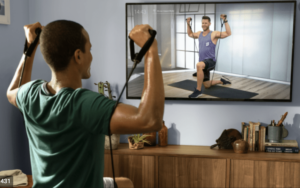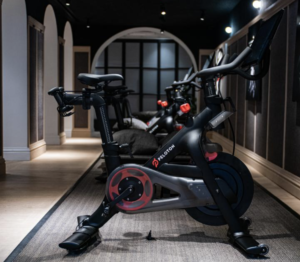This is the second part of the game speed series blogs. Part I detailed the methods used in this programme, so it is a helpful introduction to this series and I strongly recommend that you read it before starting this programme.
This programme will help push your speed through the roof, so let’s get to it.
Introduction
This programme is designed to target full body 2-4 times per week. If you are in your off-season or not currently playing, then you can work your way up to 4 times a week. However, if you are in-season or close to starting the season, two or three days is best if you can recover sufficiently.
Each session should contain a warm up followed by activating work, some sprint form work and then the main session (workouts A or B below).
Each of these sessions will consist of plyometric work via the shock method or reactive jumps, single jumps and then your strength training.
Warm Up
The warm up can consist of a variety of activities, which includes walking at a brisk pace on a treadmill (I prefer to actually just walk really fast to the gym – I hate treadmills), using the rowing machine, going through some basic movements with bodyweight or using an empty bar.
After that you need to hit some mobility and flexibility work to open up the areas discussed in Part I.
Activation
One Leg Glute Bridges x 5 per leg
One Leg Glute Bridge Holds x 10 seconds per leg
Lying Alternating Leg Raises x 20 per leg
Seated Arm Pumps x 2 x 10 per arm

A demonstration of the seated arm pumps: adopt a neutral spine with the shoulders back, swing the arms fast with the elbows into the side from pocket to cheek.
Wall Sprints x 2 x 10 each leg

Perform the wall sprints with a smooth fast continuous tempo (like you’re actually sprinting!) with your body at a 45 degree angle, contacting the floor with the front third of your foot (the forefoot or ‘ball’ of the foot) .
Workout A
1) Depth Jumps
– 6×3, 5×5, 10×2-3 (any method that keeps the reps per set low and allows you reach around 15-30 jumps)
A reminder of Depth Jump & Depth Dropping technique.
2) Broad Jumps
– 10 to 15 jumps. Measure each jump, so that you can see your best jump distance and you can measure the drop off when you begin to hit the same distance for 3-4 jumps or you see a drop in performance. When this happens, stop there.
A reminder of Broad Jumps technique.
3) Deadlifts
– Week 1: 5×3 w/85%
– Week 2: 3×3 w/90%
– Week 3: 2×1-3 w/95%
– Week 4: go for a new 1RM or take your old 1RM and try to rep it out staying away from failure
4) Bench Press
– Week 1: go for a heavy 6, reduce the weight by around 10-20 kilos and perform 3×6
– Week 2: Got to a heavy 4, reduce the weight and go for 3×4
– Week 3: go for heavy Double, reduce the weight and perform 3 doubles
– Week 4: Take your old 1RM and try to get more reps with it or go for a new 1RM
5) Pull-Ups
– Weeks 1-3: with a total load that you can only get about 6 reps with try to get 20 reps in as few sets as possible, when you can get 20 reps in 4 sets or less add weight
– Week 4: 1 set as many reps as possible at this point you should be able to do more pull ups.
6) Weight Sit-Ups/Standing Cable Ab Crunches
– Weeks 1-4: 3×8-10 heavy with good form make these slow and controlled otherwise you will not get the benefit.
Workout B
1) Altitude Drops
– 5×2-5 drops I would rather see people work from 5×2 drops and work up to the 5×5 drops with the same box height over 4 weeks than increase the height to something dangerous over 4 weeks.
A reminder of Altitude Deops technique.
2) Seated Box Jumps
– 2-3 jumps to a high box that is challenging but not too intimidating.
A reminder of Seated Box Jumps technique.
3) Front Squat
– Week 1: go to a heavy 6, reduce the weight by around 15-25 kilos and perform 3×6
– Week 2: Got to a heavy 4, reduce the weight and go for 3×4
– Week 3: go for heavy Double, reduce the weight and perform 3 doubles
– Week 4: Take your old 1RM and try to get more reps with it or go for a new 1RM
4) Overhead Press Variation
– Week 1: Go to a heavy 6, reduce the weight 10-20 kilos and go for 3×6
– Week 2: Got to a heavy 4, reduce the weight and go for 3×4
– Week 3: go for heavy Double, reduce the weight and perform 3 doubles
– Week 4: Take your old 1RM and try to get more reps with it or go for a new 1RM
5) Dumbbell Rows
– Week 1-2: 4×10
– Week 3-4: 4×8
– Lunges with a dumbbell in the goblet position or barbell in the front rack.
– Weeks 1-4: 4×5 per leg
You will notice that the only exercise with strict percentages is the deadlift. This is because although the deadlift is a cornerstone of this type of training, is very easy to burnout by going too heavy, too soon or too often.
Each session includes plyometrics and reactive jumping followed by jumping and strength work. If you do this for four weeks followed by one rest week and then repeat this cycle, you will be shocked by just how much stronger and faster you you get – and how much higher and further you will be able to jump!
There are certain things that you can do the second time around to accelerate the already stellar results you can get from this type of training, but that is a blog for another day!
Conclusion
I hope you can all take something away from this blog series. As always, if you have questions about this topic, or indeed anything relating to the subject of strength and conditioning for rugby, please do not hesitate to contact me by posting your questions/comments below.








 When most people hear the word “Peloton” they think of an expensive black bike with shiny red buttons and that controversial commercial where the husband gifted his wife a Peloton for Christmas.
When most people hear the word “Peloton” they think of an expensive black bike with shiny red buttons and that controversial commercial where the husband gifted his wife a Peloton for Christmas. If the app interests you, Peloton is currently offering a 30 day FREE TRIAL, so why not give it a try? Check it out
If the app interests you, Peloton is currently offering a 30 day FREE TRIAL, so why not give it a try? Check it out 

 This article would not be complete, however, if we did not acknowledge some of the delivery issues that have been plaguing Peloton over the last year. Most of the delivery issues seem to affect U.S. deliveries, however, the UK deliveries have been affected as well.
This article would not be complete, however, if we did not acknowledge some of the delivery issues that have been plaguing Peloton over the last year. Most of the delivery issues seem to affect U.S. deliveries, however, the UK deliveries have been affected as well.











